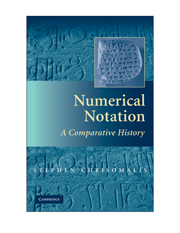Book contents
- Frontmatter
- Contents
- Acknowledgments
- 1 Introduction
- 2 Hieroglyphic Systems
- 3 Levantine Systems
- 4 Italic Systems
- 5 Alphabetic Systems
- 6 South Asian Systems
- 7 Mesopotamian Systems
- 8 East Asian Systems
- 9 Mesoamerican Systems
- 10 Miscellaneous Systems
- 11 Cognitive and Structural Analysis
- 12 Social and Historical Analysis
- 13 Conclusion
- Glossary
- Bibliography
- Index
10 - Miscellaneous Systems
Published online by Cambridge University Press: 18 May 2010
- Frontmatter
- Contents
- Acknowledgments
- 1 Introduction
- 2 Hieroglyphic Systems
- 3 Levantine Systems
- 4 Italic Systems
- 5 Alphabetic Systems
- 6 South Asian Systems
- 7 Mesopotamian Systems
- 8 East Asian Systems
- 9 Mesoamerican Systems
- 10 Miscellaneous Systems
- 11 Cognitive and Structural Analysis
- 12 Social and Historical Analysis
- 13 Conclusion
- Glossary
- Bibliography
- Index
Summary
Around twenty systems do not fit neatly into the phylogenetic classification presented in Chapters 2 through 9. A few, such as the Inka khipu numerals, the Indus (Harappan) numerals, and the enigmatic Bambara and Naxi numerals, apparently arose independently of any other system, but gave rise to no descendant systems. Others are cryptographic or limited-purpose systems used in the medieval or early modern manuscript traditions of Europe and the Middle East. The majority of this chapter, however, deals with systems that emerged in colonial settings under the influence of the Western or Arabic ciphered-positional numerals, in conjunction with the development of indigenous scripts. Most of these systems were developed in sub-Saharan Africa, but Asian (Pahawh Hmong, Varang Kshiti) and North American (Cherokee, Iñupiaq) indigenous groups have also developed their own numerical notation systems. Finally, a few systems are probably members of other phylogenies, but their exact affiliations remain inscrutable enough that no definite conclusions can be reached.
INKA
The Inka civilization was an enormous state on the Pacific coast of South America that reached its pinnacle between 1438 and 1532. While writing is often (and mistakenly) seen as a sign of civilization, or at least as a necessity for large-scale bureaucracy, the pre-colonial Inka state operated in the apparent absence of any writing system capable of expressing phonetic values. Instead, the primary means of encoding information was a system of knotted cords of different colors, known as khipus, whose main purpose was to record numerical information to aid in the administration of the Inka state.
Information
- Type
- Chapter
- Information
- Numerical NotationA Comparative History, pp. 309 - 359Publisher: Cambridge University PressPrint publication year: 2010
